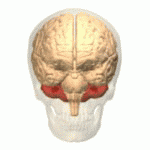Walnut & Broccoli Salad
If you remove the hair and skull from the back of your head and used 2 mirrors and a strong torch, you might be able to see your cerebellum, just below your walnut. And if you got someone else to split your head down the middle (so that both sides have an eye), you might see something which resembles broccoli in the lunch box. The cerebellum is an important part of the brain because this is where your motor memory is stored. Motor memory is remembering any physical movement including joint positions, muscle form and movement. In simple terms it is tasks such as tying your shoe laces, riding a bike, swimming, and setting up a tripod.
Small Group Ice Caving
Physiological Photography
Like many forms of art, photography has a muscular component. Motor memory is essential for learning dance moves or the finger positions on a musical instrument. The motor memory in the art of photography is not so obvious, but no less important. This example of the important relationship between photography and motor memory requires the consideration of the use of prime lenses.
Know Your Lens
Prime lenses evoke a “trial and error” learning style in the early practice stages. The requirement of movement to fine tune composition means that Motor Memories soon become the photographer’s connection to the lens. The advanced Prime Lens user will instinctively place the camera in a position. The calculation for the correct position has come through an intricate balance of incoming and out-going Muscle information, from the eye to the hands, but from the point of view of the lens. The calculations are massive, but it feels natural and effortless. The whole calculation is made easy by the cerebellum which has remembered all the tiny muscle adjustments and their relationship to the resulting image (from the “trial and error” stage).
Thoughtless Activity
A lot of other motor memories are made which help the process, such as manipulation of tripod, walking and squatting and remembering the location of buttons on your camera. These memories are purely physical and can’t be declared like remembering who is the President of Iceland, or what you had for breakfast 2 days ago. These motor activities continue perfectly well without thought. But, of course, you have to think to bring attention to them. Rembering who won 2012 Eurovision Song contest is all about thought – there is nothing physical about this memory… unless you are emotionally attached to Azerbaijan couple Ell & Nikki.
Memory Systems
Anyone who has a lot of experience with Photo Editing Software will notice that their workflow is negatively affected by a long break from the software. But you don’t forget how to open a file or click the mouse. All the knowledge and experience is not lost, but you have to tune into the system again. The same is true of taking pictures. You don’t forget how to set up your tripod or focus your camera, yet after a break, the skills need a tune-up. This is because there are different memory systems at work. You have you motor memory which is fairly resilient. Then procedural memory – which order to do things. ‘Performance’ could be considered as the harmony between these memory systems. I am just waffling – what do you think?



























